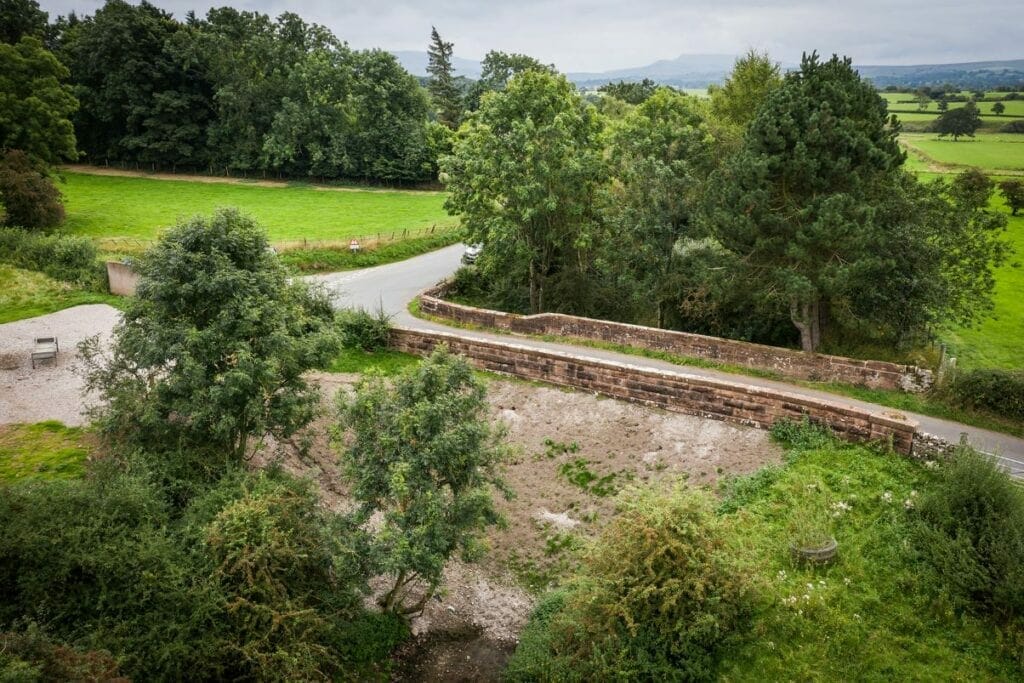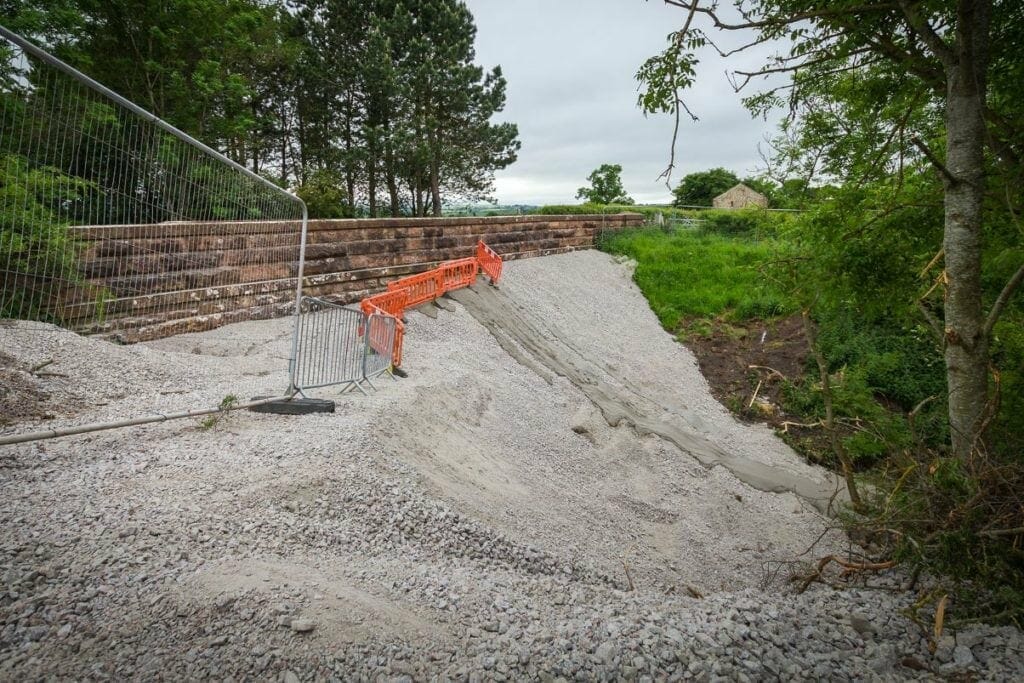
More than 1,600 tonnes of aggregate and concrete used to fill in an old railway bridge in Eden must be removed at a cost of £450,000
National Highways buried a stone arch bridge at Great Musgrave last year, blocking the route.
The work caused outrage, as for 27 years, Eden Valley and Stainmore railways have been working towards the relaying of five miles of track between Warcop and Kirkby Stephen.
An engineer employed by the state-owned roads company told Eden District Council that infilling was needed “to prevent the failure of the bridge and avert a collapse”.
However, since 2017, inspections had found the structure to be in fair condition, with only a handful of minor defects. Repointing open mortar joints — costing around £20,000 — would have enabled the structure to carry 40-tonne vehicles,
The work was carried out during May and June last year under powers intended for emergency situations presenting a threat of death or injury, with the material allowed to remain in situ for no longer than 12 months.
The council has insisted that planning permission must be obtained for retention beyond this period. Eden council’s planning committee considered the application this week.

Historical Railways Estate, acting on behalf of the Department for Transport, was refused retrospective planning permission following a unanimous vote.
The work to infill the bridge with concrete, initially carried out as emergency work to safeguard the structure, will cost an estimated £450,000 to remove, but if the application had been approved, the meeting was told that the £450,000 budget would instead have been ring-fenced to be used on the “improvement and maintenance of railway assets in the Eden Valley”.
Tim Wells, chairman of Musgrave Parish Council, said while it would be good to see the former railway line used again, their thinking was not pie in the sky, and the most important thing was the preservation of Musgrave Bridge.
“We now have this massive lot of concrete around this soft sandstone bridge, so water will end up in the stone, so long term this bridge is going to be damaged more than ever. “It’s not just bridges — we are losing our history,” said Mr Wells.
He said councillors on the planning committee had a moral obligation to think about what was being left for generations to come.
“If we keep using cement on these bridges and houses we will be losing an awful lot of history that future children will never see,” he added.
National Highways’ head of the historical railways estate programme, Hélène Rossiter, said: “Public safety is our absolute priority and despite concerns being raised by others about the need for the works, the process to assess the structure was robust.”

She said the work was undertaken by experienced and highly qualified engineers and followed a detailed inspection which had been carried out by Cumbria County Council in 1998 which confirmed the bridge was weak and required weight restrictions or strengthening.
The council did not undertake this work, and further inspections and visual checks confirmed that the bridge was deteriorating and “significant works” were required.
Following advice from Eden council in April 2020, that the works constituted permitted development, the infill project started in May, 2021, and was completed the following month.
“We have offered to remove the infill if and when a viable plan for the reopening of the former railway is proposed,” said Ms Rossister. She added that the infill scheme was a “small and discreet change” and the work was fully reversible.
“We believe the delivered works will actually protect the bridge for potential future use and that the infill is able to be removed without damage,” said Ms Rossiter.
Following a unanimous vote to refuse the retrospective planning permission, committee chairman William Patterson began to seek approval for an enforcement order to be made, before being told that would have to wait as it was not an item listed on the agenda.
After the meeting, Ms Rossiter, said: “We respect Eden District Council’s decision regarding our planning application to retain the works at Great Musgrave, and will not be appealing.
“We have listened to the feedback on this issue and earlier this year amended our processes to ensure full planning permission is sought before carrying out work like this in the future.
“Our new process of managing the estate, which has full stakeholder engagement, means we will review each structure against a range of criteria, not only for repurposing but also for heritage or ecological value.
“We will also no longer consider the infilling of any structures as part of our future plans, unless there is absolutely no alternative.”































